Chiffon Cake: Prepare to embark on a culinary adventure that will redefine your definition of cake! Have you ever dreamt of a dessert so light, so airy, it practically floats off your plate? Well, dream no more! This isn’t just any cake; it’s a cloud-like confection that will tantalize your taste buds and leave you craving more.
The Chiffon Cake, a delightful creation born in the 1920s, is a testament to American ingenuity. Invented by Harry Baker, a California insurance salesman turned baker, this cake remained a closely guarded family secret for decades. It wasn’t until he sold the recipe to General Mills that the world finally got to experience its ethereal charm. The secret? Vegetable oil, which creates a moistness unlike any other cake, and whipped egg whites, which give it its signature lift.
What makes this cake so universally loved? It’s the perfect balance of textures a tender, moist crumb combined with an almost weightless, spongy feel. It’s incredibly versatile, lending itself beautifully to a variety of flavors and toppings. Whether you enjoy it plain, dusted with powdered sugar, or adorned with fresh berries and whipped cream, this cake is a guaranteed crowd-pleaser. Plus, its impressive height makes it a stunning centerpiece for any occasion. Get ready to bake a cake that’s as impressive as it is delicious!
Ingredients:
- For the Cake:
- 2 1/4 cups (281g) cake flour, sifted
- 1 1/2 cups (300g) granulated sugar, divided
- 1 tablespoon baking powder
- 1 teaspoon salt
- 1/2 cup (120ml) vegetable oil
- 7 large egg yolks
- 3/4 cup (180ml) cold water
- 1 tablespoon vanilla extract
- 7 large egg whites
- 1/2 teaspoon cream of tartar
- Optional Glaze:
- 1 cup (120g) powdered sugar
- 2-3 tablespoons milk or lemon juice
- 1/2 teaspoon vanilla extract (optional)
Preparing the Batter:
- Sift the Dry Ingredients: In a large bowl, sift together the cake flour, 1 cup (200g) of the granulated sugar, baking powder, and salt. Sifting is crucial for a light and airy chiffon cake, so don’t skip this step! It helps to aerate the flour and ensures that the ingredients are evenly distributed.
- Combine Wet Ingredients (Yolks): In a separate bowl, whisk together the vegetable oil, egg yolks, cold water, and vanilla extract until well combined. Make sure the yolks are fully incorporated and the mixture is smooth.
- Combine Wet and Dry Ingredients: Gradually add the wet ingredients to the dry ingredients, whisking until just combined. Be careful not to overmix at this stage. Overmixing can develop the gluten in the flour, resulting in a tougher cake. A few lumps are okay.
Preparing the Meringue:
- Whip the Egg Whites: In a clean, grease-free bowl (this is very important for proper meringue formation!), beat the egg whites with an electric mixer until foamy. Add the cream of tartar and continue beating until soft peaks form. Cream of tartar helps stabilize the egg whites and prevents them from collapsing.
- Gradually Add Sugar: Gradually add the remaining 1/2 cup (100g) of granulated sugar, one tablespoon at a time, while continuing to beat the egg whites. Beat until stiff, glossy peaks form. The peaks should stand up straight when the beaters are lifted, but they shouldn’t be dry or brittle.
Combining Batter and Meringue:
- Fold in the Meringue (Part 1): Gently fold about one-third of the meringue into the yolk batter. This helps to lighten the batter and make it easier to incorporate the remaining meringue. Use a large rubber spatula and be careful not to deflate the meringue.
- Fold in the Meringue (Part 2): Gently fold in the remaining meringue in two additions, being careful not to overmix. Overmixing will deflate the meringue and result in a dense cake. The batter should be light and airy.
Baking the Cake:
- Prepare the Pan: Pour the batter into an ungreased 10-inch tube pan (angel food cake pan). Do not grease the pan! The cake needs to cling to the sides of the pan as it rises. If the pan is greased, the cake will slide down and won’t rise properly.
- Bake: Bake in a preheated oven at 325°F (160°C) for 50-60 minutes, or until a wooden skewer inserted into the center comes out clean. The baking time may vary depending on your oven, so keep an eye on the cake.
- Invert the Pan: Immediately invert the pan onto a wire rack. This is crucial for preventing the cake from collapsing. Let the cake cool completely upside down in the pan for at least 1 hour, or preferably longer.
Releasing the Cake:
- Loosen the Cake: Once the cake is completely cool, use a thin knife or offset spatula to loosen the cake from the sides of the pan and the center tube. Be gentle to avoid tearing the cake.
- Remove the Cake: Carefully remove the cake from the pan. You may need to gently push the cake up from the bottom of the pan.
Preparing the Optional Glaze:
- Whisk the Glaze Ingredients: In a small bowl, whisk together the powdered sugar, milk or lemon juice, and vanilla extract (if using) until smooth. Add more milk or lemon juice if needed to reach your desired consistency. The glaze should be thin enough to drizzle but thick enough to coat the cake.
- Drizzle the Glaze: Drizzle the glaze over the cooled cake. You can also pour the glaze over the cake and let it drip down the sides.
Tips for Success:
- Use Cake Flour: Cake flour has a lower protein content than all-purpose flour, which results in a more tender and delicate cake.
- Sift the Flour: Sifting the flour helps to aerate it and ensures that it is evenly distributed throughout the batter.
- Don’t Overmix: Overmixing the batter can develop the gluten in the flour, resulting in a tougher cake.
- Use a Clean, Grease-Free Bowl for the Meringue: Any trace of grease in the bowl can prevent the egg whites from whipping properly.
- Don’t Grease the Pan: The cake needs to cling to the sides of the pan as it rises.
- Invert the Pan Immediately After Baking: This prevents the cake from collapsing.
- Cool Completely Before Removing from the Pan: This allows the cake to set properly and prevents it from tearing.
- Adjust Sugar to Your Preference: Feel free to adjust the amount of sugar to your liking. Some people prefer a slightly less sweet cake.
- Add Flavor Extracts: Experiment with different flavor extracts, such as almond extract, lemon extract, or orange extract, to customize the flavor of the cake.
- Garnish: Garnish the cake with fresh berries, whipped cream, or a dusting of powdered sugar for a beautiful presentation.
Troubleshooting:
- Cake Didn’t Rise: Possible causes include using old baking powder, not whipping the egg whites to stiff peaks, or overmixing the batter.
- Cake Collapsed: Possible causes include not inverting the pan immediately after baking, removing the cake from the pan before it was completely cool, or overmixing the batter.
- Cake is Dense: Possible causes include using all-purpose flour instead of cake flour, overmixing the batter, or not whipping the egg whites to stiff peaks.
- Cake is Dry: Possible causes include overbaking the cake or using too much flour.
Variations:
- Chocolate Chiffon Cake: Add 1/4 cup of unsweetened cocoa powder to the dry ingredients.
- Lemon Chiffon Cake: Add the zest of 1 lemon to the wet ingredients and replace some of the water with lemon juice.
- Orange Chiffon Cake: Add the zest of 1 orange to the wet ingredients and replace some of the water with orange juice.
- Coffee Chiffon Cake: Replace some of the water with strong brewed coffee.
This recipe is a labor of love, but the result is a light, airy, and incredibly delicious cake that’s perfect for any occasion. Enjoy!
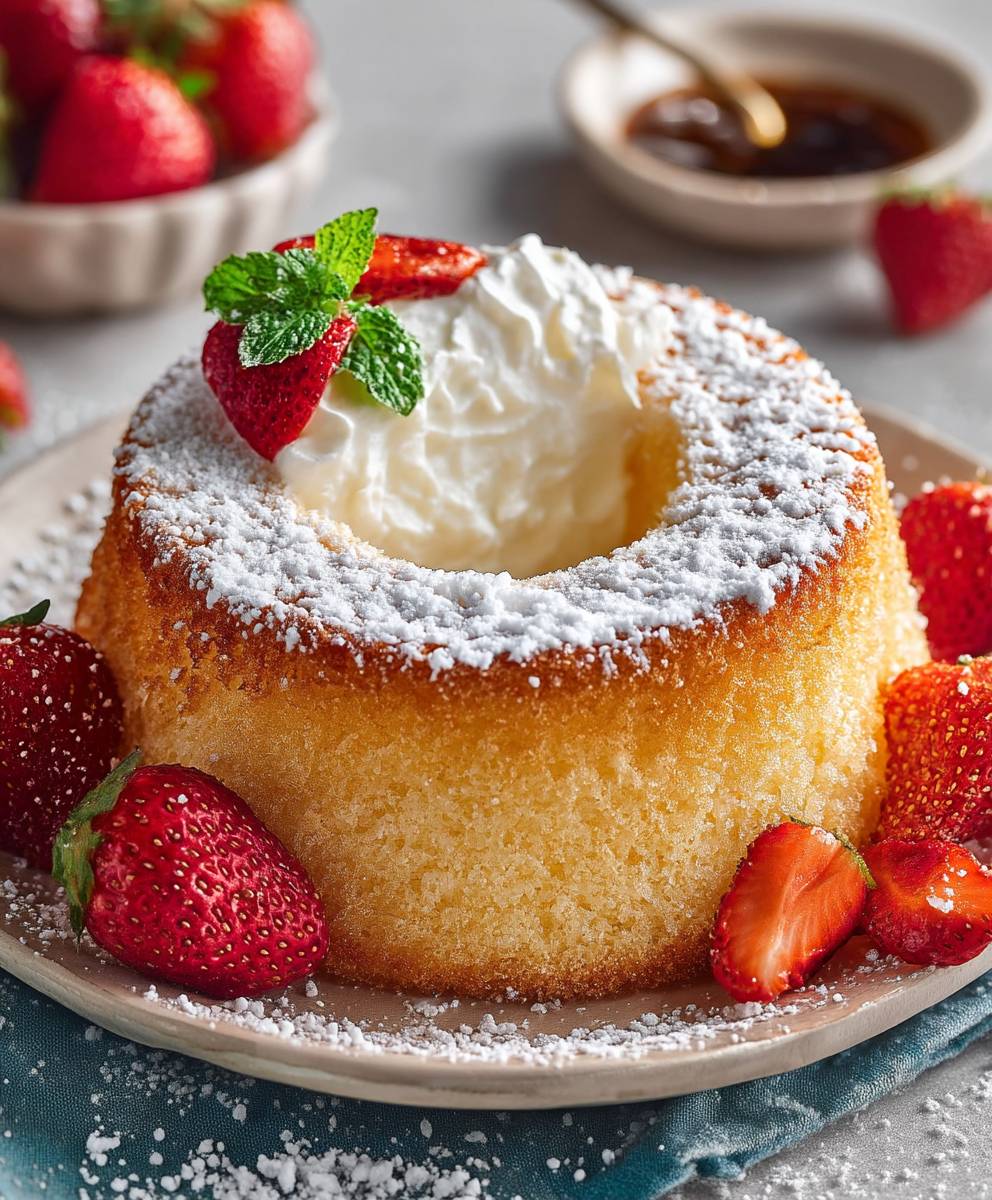
Conclusion:
And there you have it! This chiffon cake recipe isn’t just another cake recipe; it’s an invitation to experience a cloud-like texture and a delicate flavor that will absolutely delight your taste buds. I truly believe this is a must-try for any baking enthusiast, whether you’re a seasoned pro or just starting your journey into the wonderful world of desserts. The light and airy crumb, achieved through the unique folding technique and the use of oil instead of butter, sets it apart from your average cake. It’s a showstopper that’s surprisingly simple to make, and the results are consistently impressive.
Why is this recipe a must-try? Because it delivers on its promise of a truly exceptional cake. It’s not overly sweet, allowing the subtle flavors to shine through. Plus, the texture is simply divine imagine biting into a fluffy cloud! It’s perfect for any occasion, from a casual afternoon tea to a more formal celebration. And honestly, who doesn’t love a cake that’s both beautiful and delicious?
But the fun doesn’t stop there! This chiffon cake is incredibly versatile. For a simple yet elegant presentation, dust it with powdered sugar and serve it with fresh berries. A dollop of whipped cream or a scoop of vanilla ice cream adds a touch of indulgence. Or, if you’re feeling adventurous, try these variations:
- Citrus Burst: Add the zest of one lemon or orange to the batter for a bright and refreshing flavor.
- Chocolate Dream: Incorporate 1/4 cup of cocoa powder into the dry ingredients for a decadent chocolate chiffon cake. You can even add chocolate chips!
- Coffee Infusion: Dissolve a tablespoon of instant coffee in a tablespoon of hot water and add it to the wet ingredients for a subtle coffee flavor.
- Almond Delight: Add a teaspoon of almond extract to the batter and top the baked cake with slivered almonds.
- Berry Bliss: Gently fold in fresh blueberries, raspberries, or strawberries into the batter before baking.
These are just a few ideas to get you started. Feel free to experiment with different flavors and toppings to create your own signature chiffon cake masterpiece. Imagine a lavender-infused chiffon cake with a honey glaze, or a matcha chiffon cake with a white chocolate ganache. The possibilities are endless!
I’m so excited for you to try this recipe and experience the magic of a perfectly baked chiffon cake. It’s a recipe that I’ve personally perfected over time, and I’m confident that you’ll love it as much as I do.
So, what are you waiting for? Preheat your oven, gather your ingredients, and get ready to bake! Don’t be intimidated by the folding technique; it’s easier than it looks, and the results are well worth the effort.
Once you’ve baked your own chiffon cake, I’d absolutely love to hear about your experience. Share your photos and stories in the comments below! Let me know what variations you tried, what toppings you used, and how much everyone enjoyed it. Your feedback is invaluable, and it helps me to continue creating and sharing delicious recipes with all of you. Happy baking! I can’t wait to see your chiffon cake creations!
Chiffon Cake: The Ultimate Guide to Baking Light and Airy Perfection
Light and airy chiffon cake with a delicate crumb, perfect for any occasion. Optionally topped with a simple powdered sugar glaze.
Ingredients
- 2 1/4 cups (281g) cake flour, sifted
- 1 1/2 cups (300g) granulated sugar, divided
- 1 tablespoon baking powder
- 1 teaspoon salt
- 1/2 cup (120ml) vegetable oil
- 7 large egg yolks
- 3/4 cup (180ml) cold water
- 1 tablespoon vanilla extract
- 7 large egg whites
- 1/2 teaspoon cream of tartar
- 1 cup (120g) powdered sugar
- 2-3 tablespoons milk or lemon juice
- 1/2 teaspoon vanilla extract (optional)
Instructions
- Sift the Dry Ingredients: In a large bowl, sift together the cake flour, 1 cup (200g) of the granulated sugar, baking powder, and salt.
- Combine Wet Ingredients (Yolks): In a separate bowl, whisk together the vegetable oil, egg yolks, cold water, and vanilla extract until well combined.
- Combine Wet and Dry Ingredients: Gradually add the wet ingredients to the dry ingredients, whisking until just combined. Be careful not to overmix.
- Whip the Egg Whites: In a clean, grease-free bowl, beat the egg whites with an electric mixer until foamy. Add the cream of tartar and continue beating until soft peaks form.
- Gradually Add Sugar: Gradually add the remaining 1/2 cup (100g) of granulated sugar, one tablespoon at a time, while continuing to beat the egg whites. Beat until stiff, glossy peaks form.
- Fold in the Meringue (Part 1): Gently fold about one-third of the meringue into the yolk batter.
- Fold in the Meringue (Part 2): Gently fold in the remaining meringue in two additions, being careful not to overmix.
- Prepare the Pan: Pour the batter into an ungreased 10-inch tube pan (angel food cake pan). Do not grease the pan!
- Bake: Bake in a preheated oven at 325°F (160°C) for 50-60 minutes, or until a wooden skewer inserted into the center comes out clean.
- Invert the Pan: Immediately invert the pan onto a wire rack. Let the cake cool completely upside down in the pan for at least 1 hour, or preferably longer.
- Loosen the Cake: Once the cake is completely cool, use a thin knife or offset spatula to loosen the cake from the sides of the pan and the center tube.
- Remove the Cake: Carefully remove the cake from the pan.
- Whisk the Glaze Ingredients: In a small bowl, whisk together the powdered sugar, milk or lemon juice, and vanilla extract (if using) until smooth. Add more milk or lemon juice if needed to reach your desired consistency.
- Drizzle the Glaze: Drizzle the glaze over the cooled cake.
Notes
- Use cake flour for a tender crumb.
- Sifting the flour helps to aerate it.
- Don’t overmix the batter.
- Use a clean, grease-free bowl for the meringue.
- Don’t grease the pan.
- Invert the pan immediately after baking.
- Cool completely before removing from the pan.
- Adjust sugar to your preference.
- Experiment with different flavor extracts.
- Garnish with fresh berries, whipped cream, or a dusting of powdered sugar.


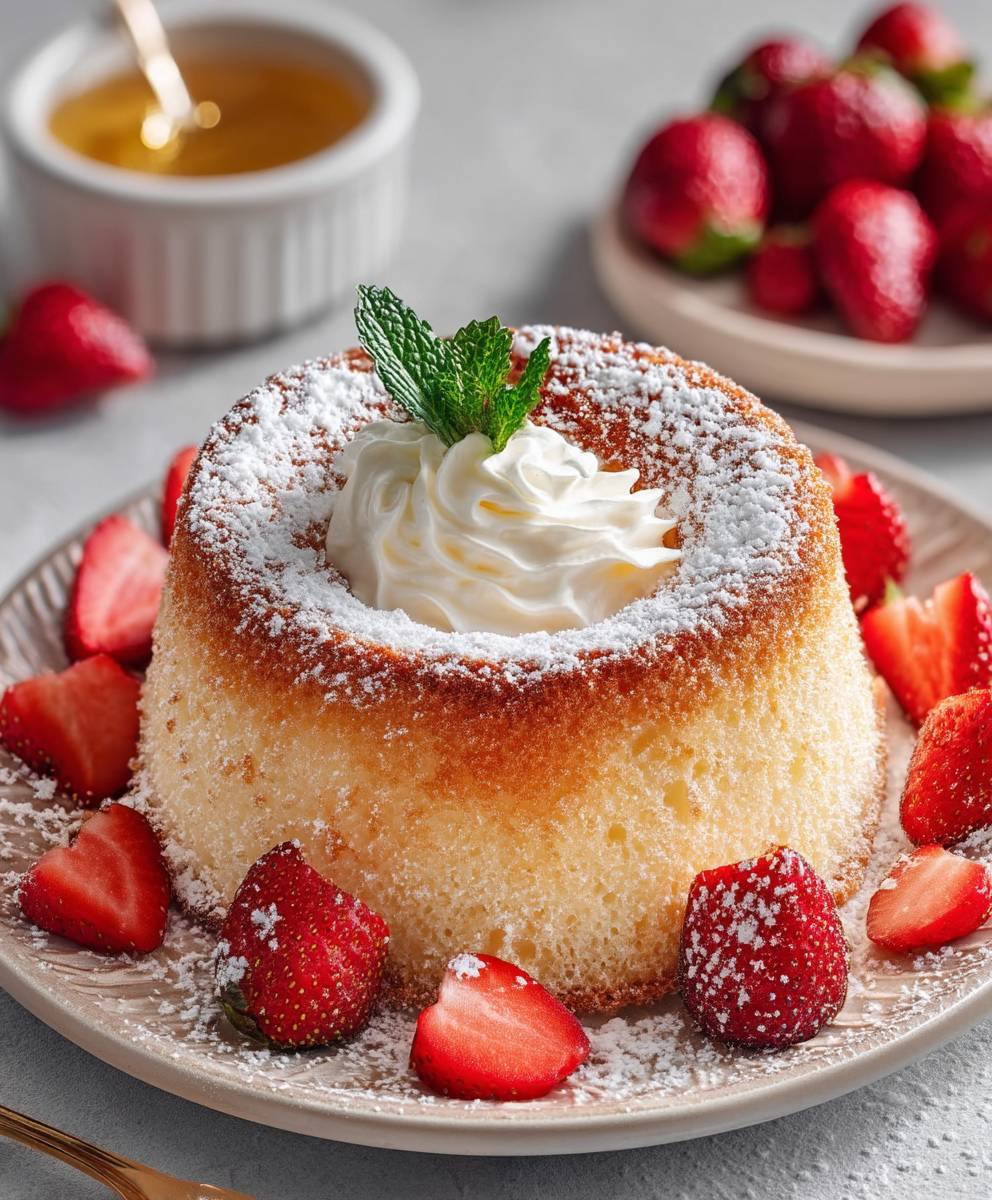
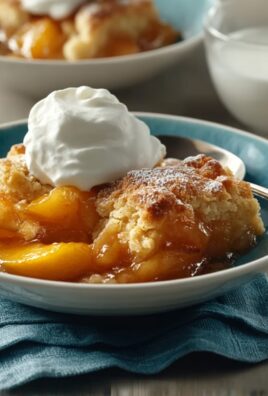
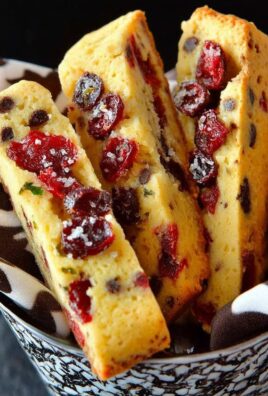
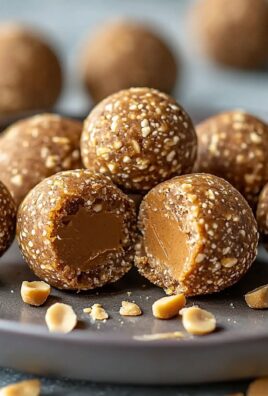
Leave a Comment